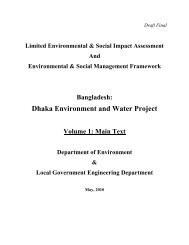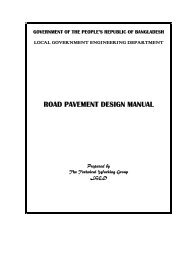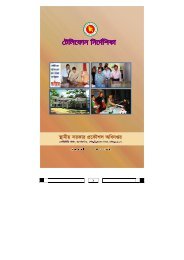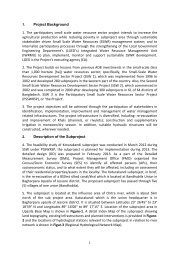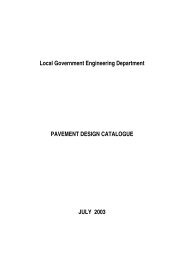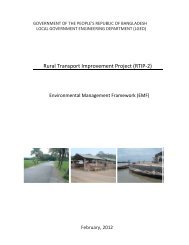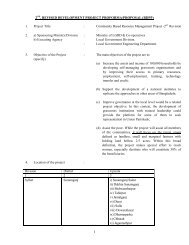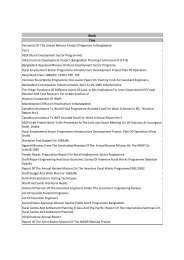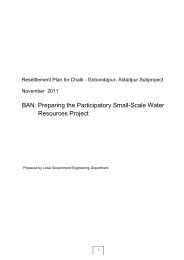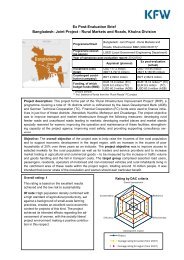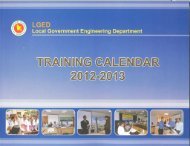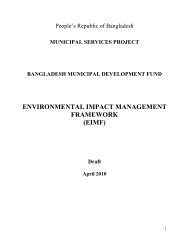PAD - LGED
PAD - LGED
PAD - LGED
Create successful ePaper yourself
Turn your PDF publications into a flip-book with our unique Google optimized e-Paper software.
Annex 8: Economic Analysis<br />
Bangladesh: Second Rural Transport Improvement Project (P123828)<br />
1. A Cost-benefit analysis has been carried out for the main investments components of the<br />
project: (i) Rehabilitation and Periodic Maintenance (including pilot for PBMC), and Upazila<br />
and Union Roads Improvement; (ii) GMC and ghats improvement; and (iii) RWT improvement.<br />
The sections below describe the methodology, main results of the economic appraisal, and<br />
sensitivity analysis for each of the component.<br />
A. RMP and Upazila and Union Roads Improvement components:<br />
i) Methodology and main assumptions:<br />
2. A cost-benefit analysis was carried out for the candidate roads identified under the UZR<br />
and UNR improvement component. Only roads for the first year of the RPM component have<br />
been selected, therefore the cost-benefit analysis is limited to those identified roads.<br />
3. Both, the RPM and road improvement components are expected to produce benefits of<br />
the form of improved access for rural communities in the area of project influence, reduced<br />
transport cost for the road users, more efficient marketing of rural products, and ultimately<br />
increased employment and income generation. The benefits have been compared with the<br />
economic costs of the roads sub-projects components over the project life (assumed to be 20<br />
years), in order to determine their economic internal rates of return (EIRR), and economic net<br />
present values (ENPV).<br />
4. The project life was assumed to be inclusive of the construction and maintenance periods<br />
for each improved asset and thus defined the period for the project appraisal. In the case of the<br />
roads sub-projects, a construction period of 18 months was assumed.<br />
ii) Measurement of economic costs:<br />
5. Recent biddings and contract rates for <strong>LGED</strong> projects which now being implemented<br />
were used as the basis for computing the average unit capital costs to be applied in the appraisal<br />
of selected RTIP-II sub-projects, inflated to mid-2012 values. However, for some UZR<br />
improvement sub-projects for which detailed survey, design and cost estimation has been<br />
completed, these cost estimates have been used. These unit costs, expressed in financial values,<br />
were converted to economic values through the application of a Shadow Pricing Factor (SPF).<br />
6. In previous <strong>LGED</strong> projects, a standard SPF of 0.80 was applied in order to remove the<br />
tax and duty components, as well as to adjust for any market distortions (such as subsidies) in<br />
financial prices. To ensure consistency with other projects, a SPF of 0.80 was used for the<br />
determination of economic costs in RTIP-II. At this level, the SPF makes adequate allowance for<br />
the importation of some construction materials (such as asphalt) which will carry higher rates of<br />
tax.<br />
89



